Fast Facts
- When: 30th March 2024
- Where: Meydan Racecourse, Dubai, UAE
- Watch: Sky Sports Racing
- Official Website: Dubai Racing Club
The Dubai World Cup is one of the world’s most valuable races and is held each year in March at Meydan racecourse, Dubai, in the United Arab Emirates. The race is the headline act of Dubai World Cup Day which is the single richest raceday anywhere on the planet.
World Cup Day signals the end of Dubai’s World Cup Carnival, which is a valuable series of ten meetings which begin in January. The meeting is also an indication of the end of the racing season at Meydan, with the last fixture coming in April before the temperatures soar through the summer months.
With a purse of around $12 million for the World Cup itself, the winner collecting around $7 million, the top trainers from all over the globe will be competing her for one of racing’s biggest prizes.
Below we’ll have our predictions for the big race, along with all the best betting offers when they become available to take advantage of.
Existing Customer Free Bets & Money Back Offers
Please Note: This event has now ended.
About The Dubai World Cup
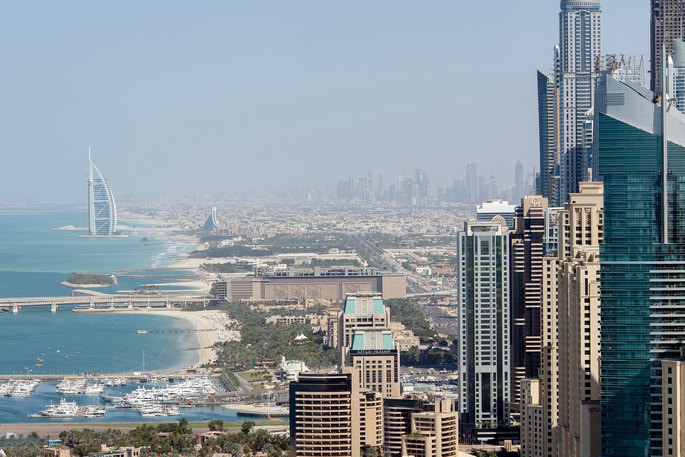
The world of horse racing is somewhat equatable to the world of fine wine, in so much as there are a number of classics that people return to time and again but over the years a number of ‘new world’ offerings have come along to compete for attention. You can discover for yourself how this applies in the world of wine, but when it comes to horse racing the most famous races are the likes of the Cheltenham Gold Cup, the Grand National, the 1,000 and 2,000 Guineas and the Epsom Derby and Oaks.
Those races have been the inspiration for countless others over the years, with the most obvious examples coming in the form of the likes of the Kentucky Derby in America and the Melbourne Cup in Australia. One of the most recent additions to this list is the one that we’re talking about here, which is the Dubai World Cup. Created in 1996, it is considered to be one of the foremost thoroughbred races in the Arabic world, coming at the end of the Dubai World Cup Night of races.
The race is the responsibility of the Emirates Racing Authority, which boasts the owner of Manchester City Football Club and the Minister of Presidential Affairs in the United Arab Emirates, Sheikh Mansour bin Zayed Al Nahyan, as its Chairman. The other eight races of Dubai World Cup Night are also the ERA’s responsibility.
The first thing you’re likely to want to know is the format of the main race. Run left-handed over two thousand metres, which is about ten furlongs, the Dubai World Cup takes place on a dirt track. Qualification for the event is open to three-year-olds and over from the Southern Hemisphere and horses aged four and up from the Northern Hemisphere.
There is a weight of fifty-four and a half kilograms on the three-year-old horses from the Southern Hemisphere and fifty-seven kilograms on all other horses. The Group 1 flat race takes place in late March every year at the Meydan Racecourse in Dubai and is only open to thoroughbreds.
Sheikh Mohamad Creates the Dubai World Cup
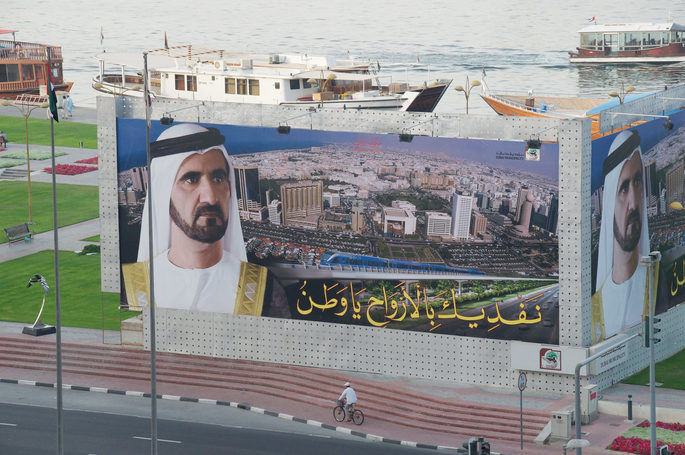
Given that it has only been taking place since 1996, it’s entirely fair to say that the Dubai World Cup doesn’t have as illustrious a history as some of those classic races referred to before. It was the brainchild of Sheikh Mohammed bin Rashid Al Maktoum, who was the Vice President and Prime Minister of the United Arab Emirates and the Ruler of Dubai at the time. He had long enjoyed a fascination with horse racing, owning Darley Stud & Godolphin Racing. That is considered to be one of the best thoroughbred racing and breeding operations anywhere in the world.
Meydan & Nad Al Sheba Racecourse
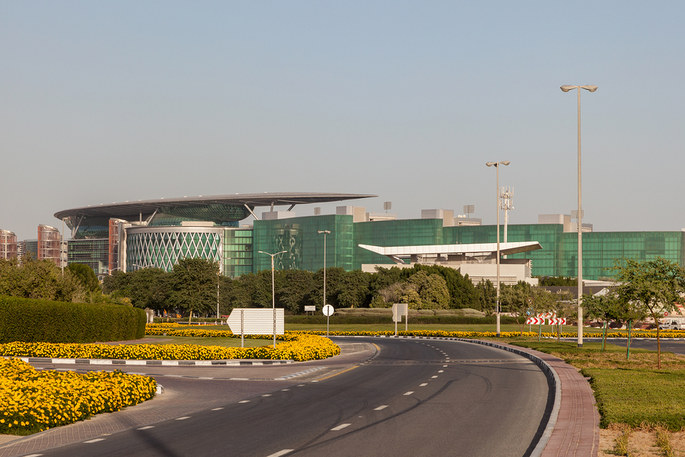
From the race’s inauguration up until 2009 the race was hosted by Nad Al Sheba Racecourse in Dubai, but it was closed in 2009 in order to completely revamp the venue. When it reopened it was renamed as Meydan Racecourse, meaning that the race has taken place at the same location but on two different courses since its inception. When the Meydan Racecourse was first used it had an artificial surface known as Tapeta and this was the surface that the Dubai World Cup was raced on until 2015. The surface proved to be unpopular, especially with American racing enthusiasts, and so in 2015 the dirt track was reinstated at the course.
As with most things in Dubai, Meydan Racecourse is an impressive site and sight. The course’s grandstand is more than a mile long and has the ability to welcome more than sixty thousand spectators. It boasts the world’s first five-star hotel on the side of a racetrack. There’s also plenty of restaurants, as you’d expect, as well as seventy-two corporate suites and a racing museum.
Those corporate suites come into their own when the racecourse is not in use and it serves as a centre for business and conferences. To give you some idea of how spectacular the venue is, it was used as the shooting location for a docking bay that housed the USS Enterprise for the film Star Trek Beyond. Numerous musicians have performed at the racecourse over the years, including Lady Gaga, Kylie Minogue and Elton John.
Cigar – The Inaugural Winner
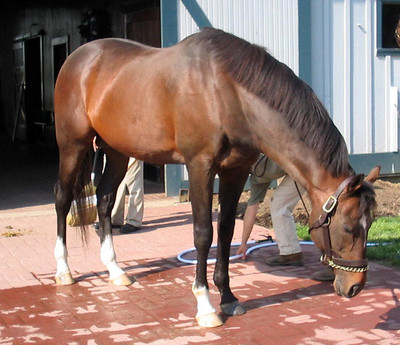
Outside the barn of Bill Mott at Belmont Park in the United States of America hangs a plaque dedicated to the honour of Cigar. The thoroughbred race horse won an impressive twelve major honours between 1994 and 1996, including the Breeders’ Cup and the Pimlico Special.
In 2002 he was welcomed into the National Museum of Racing’s Hall of Fame, giving you an indication of just how special he was. When a list of the top one hundred American race horses of the twentieth century was collated, Cigar came eighteenth. It’s perhaps little surprise, then, that he was the inaugural winner of the Dubai World Cup.
Records
Interestingly, at the time of writing only one horse has won the race more than once, Thunder Snow in 2018 and 2019 for the Godolphin team.
The most successful jockeys, meanwhile, are Jerry Bailey and Frankie Dettori. Bailey won the first race on Cigar and then repeated his trick on Singspiel the following year. He won another two races back-to-back in 2001 and 2002. Only one of his wins, the 2002 victory on Street Cry, came on the back of a horse belonging to the most successful owner in the race’s history.
Dettori’s first three wins all came for Godolphin between 2000 and 2006. He joined Jerry Bailey at the top of the jockeys chart in 2022 when riding Country Grammer to victory for US trainer Bob Baffert. The only other jockey to win more than one World Cup is Belgian rider Christophe Soumillon.
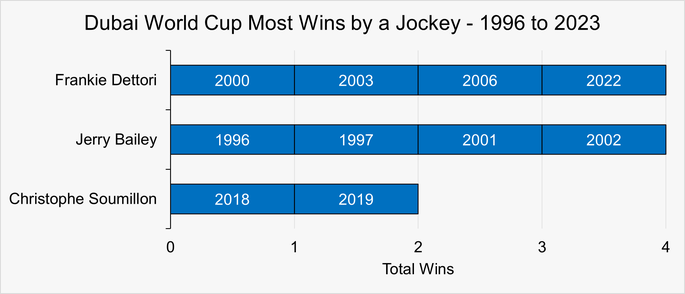
Godolphin Racing have owned nine winners to date, with eight of those having been trained by Saeed bin Suroor, who is the race’s most successful trainer thanks to his nine wins.
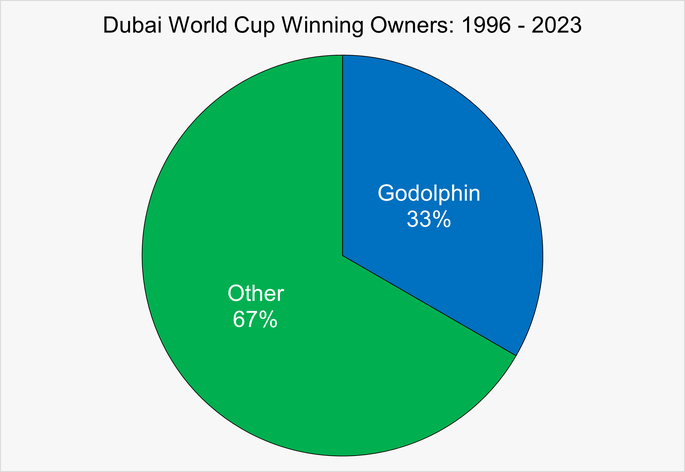
Other Dubai World Cup Night Races
As mentioned earlier, the Dubai World Cup is a race that comes at the end of a spectacular day of racing at Meydan Racecourse. Unsurprisingly for an event that takes place in the United Arab Emirates and in Dubai specifically, it is the richest single day of thoroughbred racing anywhere in the world. The event features eight thoroughbred races as well as a single race specifically for Purebred Arabian horses. We’ll look at the remaining races, other than the Dubai World Cup that we’ve already covered, in turn now:
Dubai Kahayla Classic
| Race Number | Distance | Grade | Prize Fund |
|---|---|---|---|
| 1 | 1m 2f | Arab Group 1 | $1 million |
It is that solitary race for Purebred Arabian horses that kickstarts proceedings. Having started life as the Mashreq Bank Handicap, this race lasted just one year under that title before becoming the Dubai Arabian Classic in 1997. Three years later and it underwent another name change when it became the Dubai Kahayla Classic, keeping that title since. It became a Group 1 race in 1999 was originally run on dirt before shifting to Tapeta along with the rest of the races when Nad Al Sheba Racecourse became Meydan Racecourse in 2010.
Godolphin Mile
| Race Number | Distance | Grade | Prize Fund |
|---|---|---|---|
| 2 | 1m | Group 2 | $1.5 million |
This Group 2 flat race is run on dirt over sixteen hundred metres and was inaugurated as the Nad Al Sheba Mile back in 1994. It got its current name in 2000 and is for three-year-olds from the Southern Hemisphere and four-year-olds from the Northern Hemisphere. As with a number of the other races, it boasts a purse of $1.5 million.
Dubai Gold Cup
| Race Number | Distance | Grade | Prize Fund |
|---|---|---|---|
| 3 | 2m | Group 2 | $1.5 million |
The Dubai Gold Cup might share a name with its famous counterpart that takes place at the Cheltenham Festival every year, but that’s all that the two races share. It was inaugurated in 2012 and didn’t enjoy the best of starts, having to be re-run later in the evening after a fatal injury was sustained by Fox Hunt the first time around. It was a Group 3 race until 2014 when it moved up a level. Run left-handed on turf over a distance of three thousand two hundred metres, the race is open to horses aged three and up.
Al Quoz Sprint
| Race Number | Distance | Grade | Prize Fund |
|---|---|---|---|
| 4 | 6f | Group 1 | $2 million |
This race was originally part of the Dubai International Racing Carnival, only moving to the Dubai World Cup Night when Meydan Racecourse opened in 2010. That was just its fourth year of racing, having been inaugurated in 2007. It’s a Group 1 race that is for three-year-olds and over. It was originally run over twelve hundred metres, shortening to one thousand metres in 2011 before returning to its initial length in 2017.
UAE Derby
| Race Number | Distance | Grade | Prize Fund |
|---|---|---|---|
| 5 | 1m 1½f | Group 2 | $2.5 million |
The name suggests that this race has links to other Derby races and that is correct; it can earn winners points for the Kentucky Derby and is used as a warm-up race for that event by many. First run in 2000 over a distance of eighteen hundred metres, it was lengthened to two thousand metres in 2002, the same year that it earned its Group 2 status. The length dropped back down to eighteen hundred metres in 2004 and then increased to nineteen hundred metres five years later. It’s for thoroughbreds aged three and over from either hemisphere and has a purse of $2.5 million.
Dubai Golden Shaheen
| Race Number | Distance | Grade | Prize Fund |
|---|---|---|---|
| 6 | 6f | Group 1 | $2.5 million |
Another Group 1 race for thoroughbreds, the Dubai Golden Shaheen is open to horses aged three and over regardless of which hemisphere they’re from. It takes place over twelve hundred metres, which is the equivalent of about six furlongs. First run as the Nad Al Sheba Sprint in December of 1993, it was moved to March in 1996 in order to be part of the Dubai World Cup Night and got its current name in 2000. It has been the third-leg of the ten race Global Sprint Challenge series since 2012.
Dubai Turf
| Race Number | Distance | Grade | Prize Fund |
|---|---|---|---|
| 7 | 1m 1f | Group 1 | $6 million |
Along with the Dubai Sheema Classic, this is one of the richest races in the world thanks to its purse of $6 million. First run in 1996 under the title of the Dubai Duty Free, it received its current title in 2015 after it received sponsorship from DP World Signs. It originally took place over two thousand metres but dropped to one thousand seven hundred and seventy-seven metres in 2000. Two years after that it achieved Group 1 status and then in 2006 it became part of the four race Asian Mile Challenge. It has been run over eighteen hundred metres since moving to Meydan Racecourse in 2010.
Dubai Sheema Classic
| Race Number | Distance | Grade | Prize Fund |
|---|---|---|---|
| 8 | 1m 4f | Group 1 | $6 million |
This Group 1 flat race is run left-handed and is open to thoroughbreds aged three and up from the Southern Hemisphere and four and over from the Northern Hemisphere. It is run over around a mile and a half, or two thousand four hundred and ten metres in local money. It was first run under the title of the Dubai Turf Classic in 1998 but was renamed at the turn of the millennium. It received its Group 1 status in 2002 and boasts a purse of $6 million. That means that it is worth the same amount as the Dubai Turf and only The Everest in Australia is worth more to the winners.
Interesting Facts
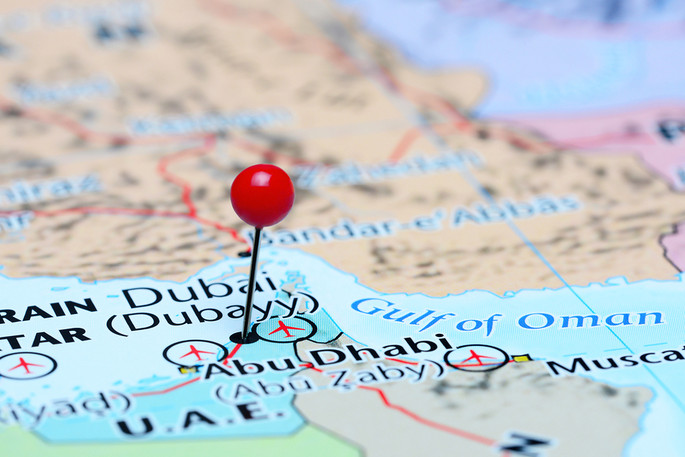
Whilst the individual races all boast a number of interesting facts all of their own, those that belong to the Dubai World Cup itself are somewhat limited. We’ve already told you about the race’s most successful owner, jockey and trainer, so we’ll give you some other information now.
- The fastest runner of the race when it was hosted at Nad Al Sheba Racecourse was Dubai Millennium, coincidentally winning the event on its outing in the millennium. The winning time was 1 minute 59.5 seconds in 2000.
- On the synthetic track at Meydan Racecourse, the fastest time was 2 minutes 1.61 seconds. That was achieved by African Story in 2014
- The dirt track hasn’t been in place for long at the time of writing, but the fastest winning time so far on it was the 2 minutes 1.38 seconds managed by Thunder Snow in 2018
- When the Dubai World Cup was broadcast on the TVG Network and HRTV and then later shown on ABC, it was the first time that the race had been available on national TV in the US
